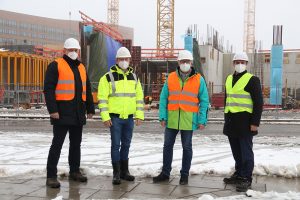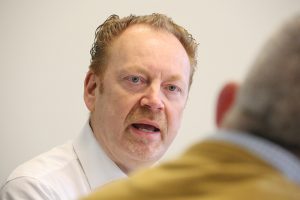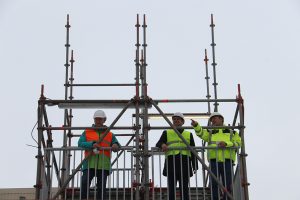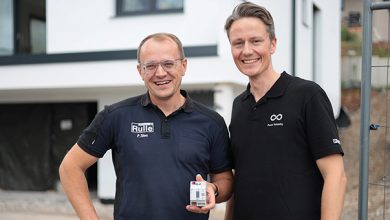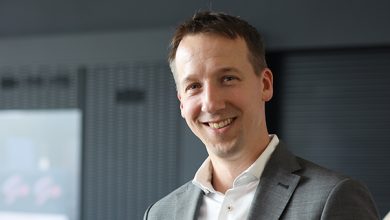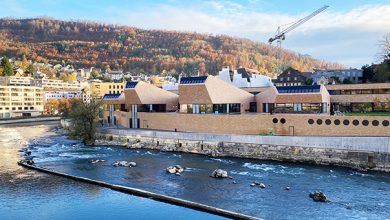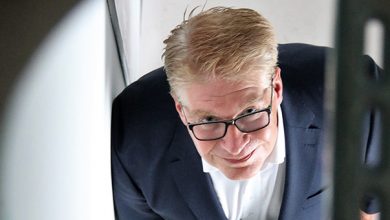Spring 2021 – no cable has yet been installed, no control cabinet has been fitted, and no control system has been activated. Nevertheless, the building automation experts from Phoenix Contact are already working intensively on a new Hamburg gem. A look into the excavation pit of Europe’s largest construction site – the Westfield Hamburg – Südliches Überseequartier.
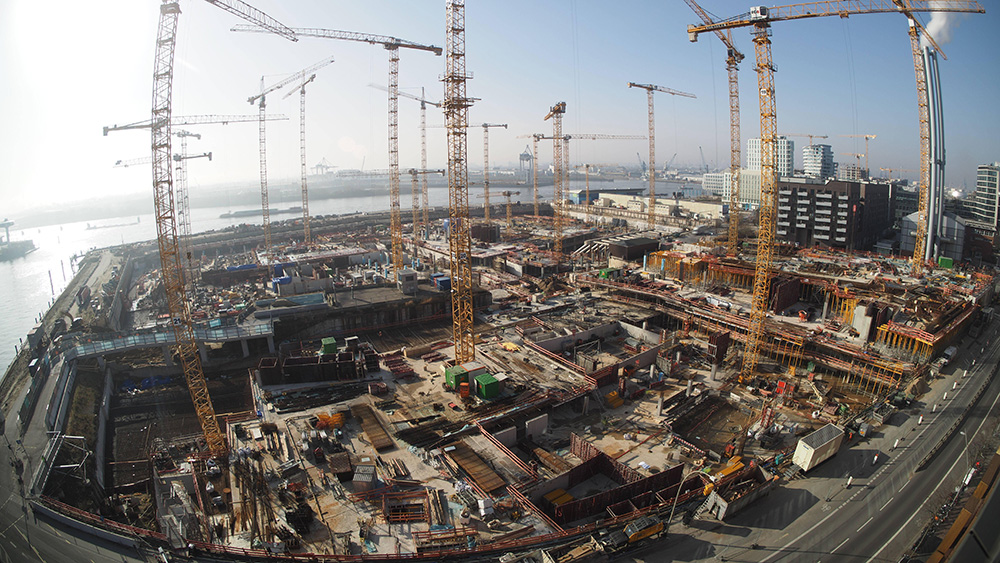
A few meters away, the waves of the Elbe hit the quay walls. The pressure exerted by the river on the 15-meter-deep excavation pit is enormous. Reinforced concrete walls more than one meter thick defy the current. But what are building automation specialists from East Westphalia doing at this early stage of the shell construction?
To answer this question, Michael Prior grabbed his construction helmet and swapped his leather shoes for sturdy safety boots. Since 2015, right from the start of activities on the massive construction site, the mechanical engineering graduate and experienced project manager has been active in the service of the world’s leading flagship destination operator. A few steps separate the planning office of Unibail-Rodamco-Westfield from the El Dorado of 24 construction cranes, tightly woven rebar and pumping concrete lifts. Past the entrance with attentive gatekeepers who, in addition to helmets and vests, make sure the workers are equipped with mouth-nose protection – protective and hygienic concepts accompany the 400 or so construction workers on site.
Born in Dortmund, he is an old hand when it comes to building technology and has already automated all kinds of buildings. Since 2008, he has worked for Unibail-Rodamco-Westfield and its predecessor companies as Head of Technology Germany, and in this role he has seen quite a few properties come into being and put them on track technically. “In 2017, I then set up my own office and advised clients on technology and project management.”
Prior smiles: “Well, shortly after that, my old employer contacted me with the challenge of the Hamburg project. And then I was and am right back in the thick of things, as if nothing had changed.
The view into the abyss
Why the experienced specialist is needed can already be seen at the edge of the excavation pit. The Südliches Überseequartier is a construction site of extremes: One million tons of earth have been moved since construction began in 2017 to create space for the three underground floors with their underground garages, deliveries, utilities and a bus terminal. That would be enough to fill the Binnenalster a good one-and-a-half times. Of this, 200,000 tons were removed by ship. An entire subway line (the still new U4) was partially uncovered in the process and specially equipped with sensitive sensor technology to avert structural damage to the reinforced concrete tube. After all, 1,300 bored piles were driven to a depth of up to 18 meters to provide a secure foundation for the 14 buildings. You have to prepare everything very precisely so that the walls don’t shake and certainly not the tube,” smiles Michael Prior.
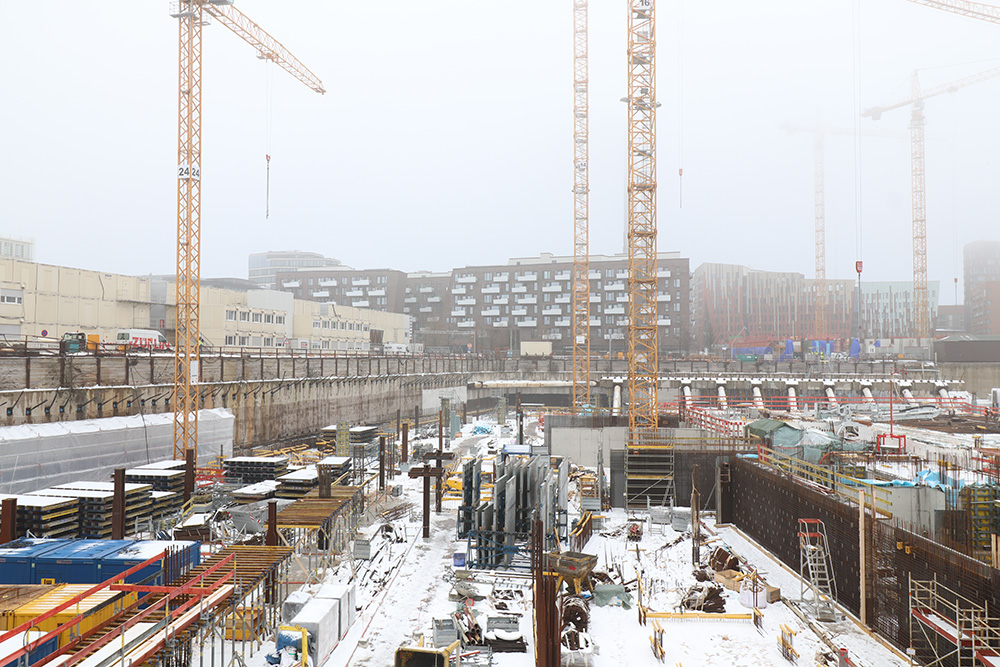
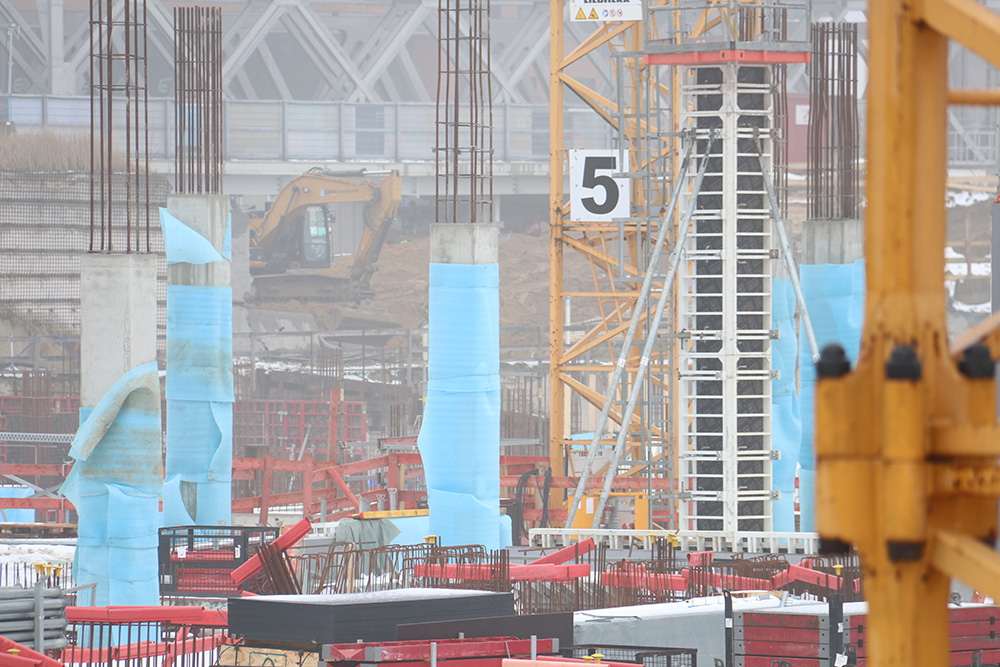
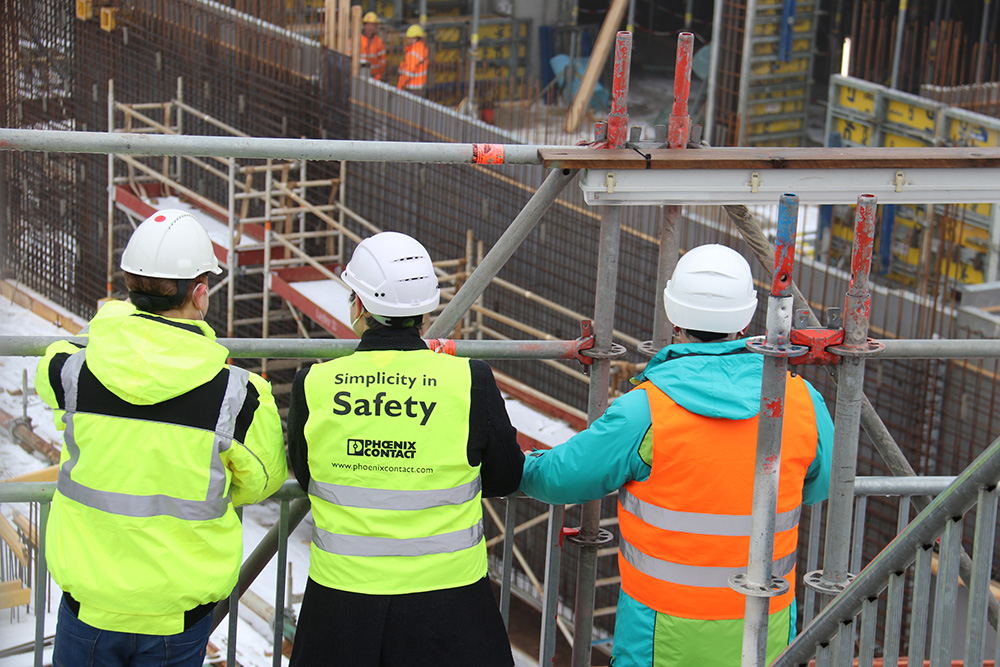
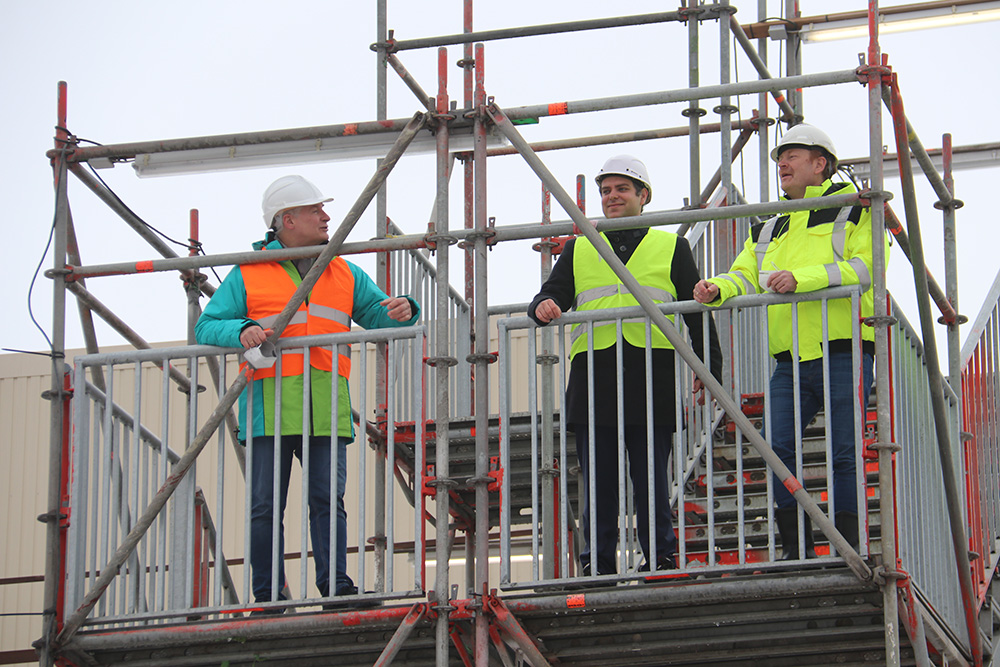
The northern Überseequartier was officially opened on October 23, 2010. “We will follow with the Westfield Hamburg – Southern Überseequartier in 2023,” Prior says optimistically in view of the imposing construction pit. “In the southern construction field, the basement floors are already almost complete, and the shell buildings are now growing upwards there. In the northern construction field, the shell has now reached the first floor and the upper floors are slowly taking shape.” Obviously, public construction projects and those in private hands do not differ in terms of dimensions, but they do in terms of planning and execution, adherence to schedules and cost development. With sighing thoughts of capital city airports and southern German underground train stations, we follow Michael Prior down one of the stairways into the still open underground level of Hamburg’s new flagship.
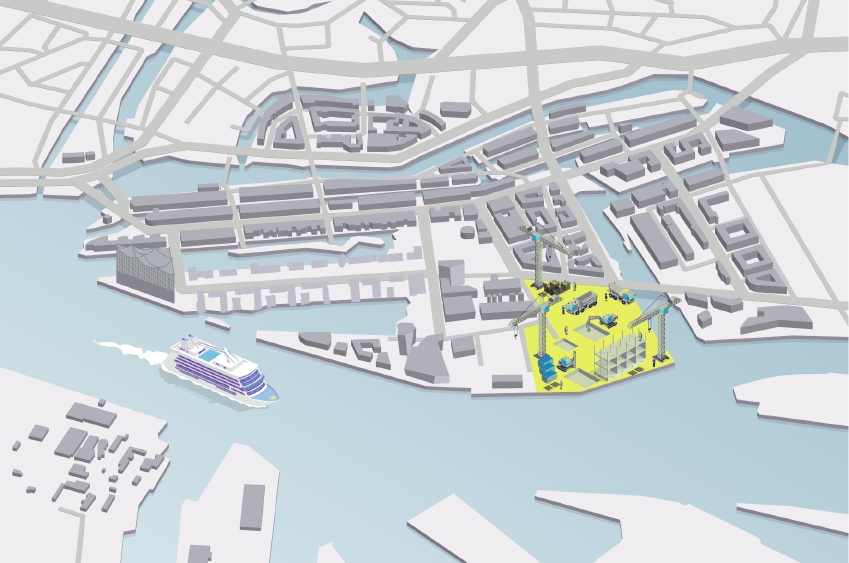
“The project is very important for Unibail-Rodamco-Westfield at the moment, not only because of sheer size, but also because of the multiple different types of uses that will form a vibrant urban neighborhood. This is also one of the lighthouse projects for us worldwide,” explains the 57-year-old real estate expert. “We are once again increasing the attractiveness of Hamburg’s city center and enhancing the city’s national and international appeal.”
New thinking at the Elbe
With the early involvement of Phoenix Contact, Unibail-Rodamco-Westfield is breaking completely new ground. Michael Prior explains: “Let’s first look at the classic way of working. As a project developer, we handled projects with the classic individual awarding of contracts. Planning, tendering, bidding process, award of contract. That’s how we’ve been working for a good 15 years.”
Looking over the huge construction site, Michael Prior continues: “We are not just building a shopping center here, but an area with very different users and requirements. This must later become a functioning technical unit, despite the complexity of the different trades and technologies. Take refrigeration technology, for example. We are building it for the retail sector, not just for us. The hotels and the
cinema building will also be connected to it. Or electricity, which has to serve very different needs, depending on use. There is also an overarching fire protection management system for the entire quarter. There are many other examples of such situations. After intensive internal discussions, we realized that we had to take a completely new look at comprehensive building automation.
And it was clear to us that we would not get anywhere here with a classic planner who would use standard technology. Our requirements simply went far beyond the norm. So it then came about that automation was removed from the usual planning process. We started looking for a planner who would also build after the planning phase. In other words, they actually plan with an understanding of how we do it, because we ourselves are also users of our plans later on. That was completely new for the market.
Teamwork already at the excavation pit
And this is where we became aware of Phoenix Contact. Their philosophy and self-image simply matched our requirements. Because Phoenix Contact also thinks of automation differently, since enormous experience from the field of industrial automation is available. Close contact was established during the tender and quotation phase, because our requirements were also in flux and were adapted several times. Thus, a cooperation was established at a very early stage of the project.”
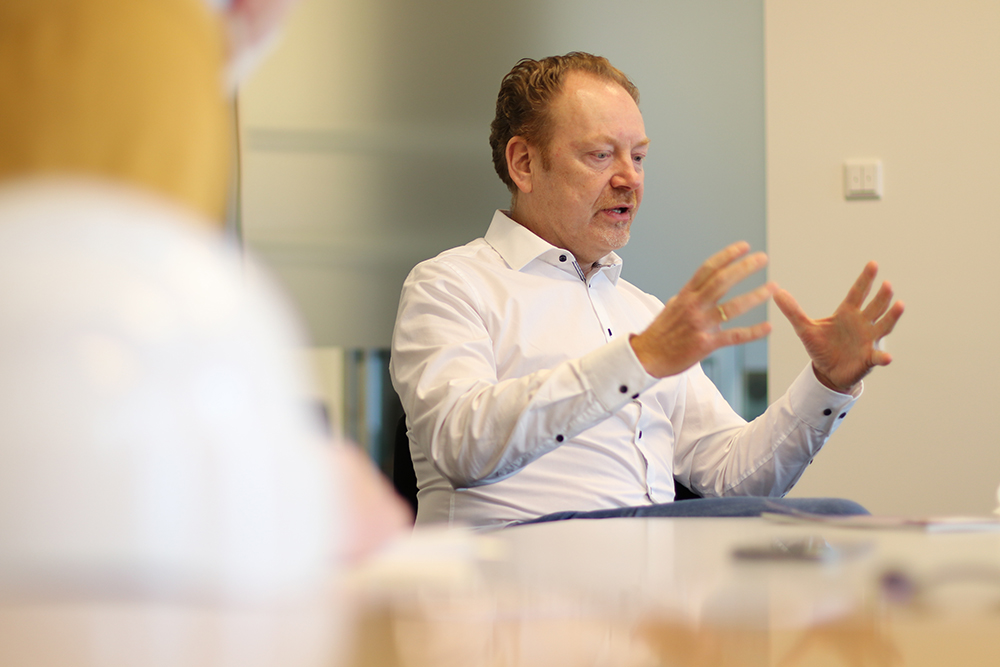
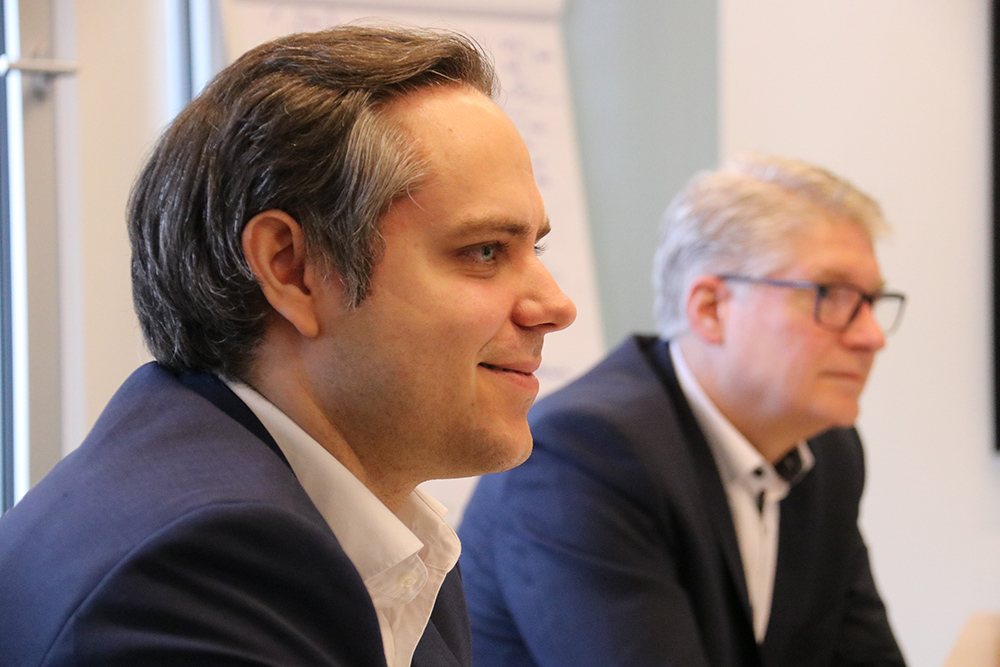
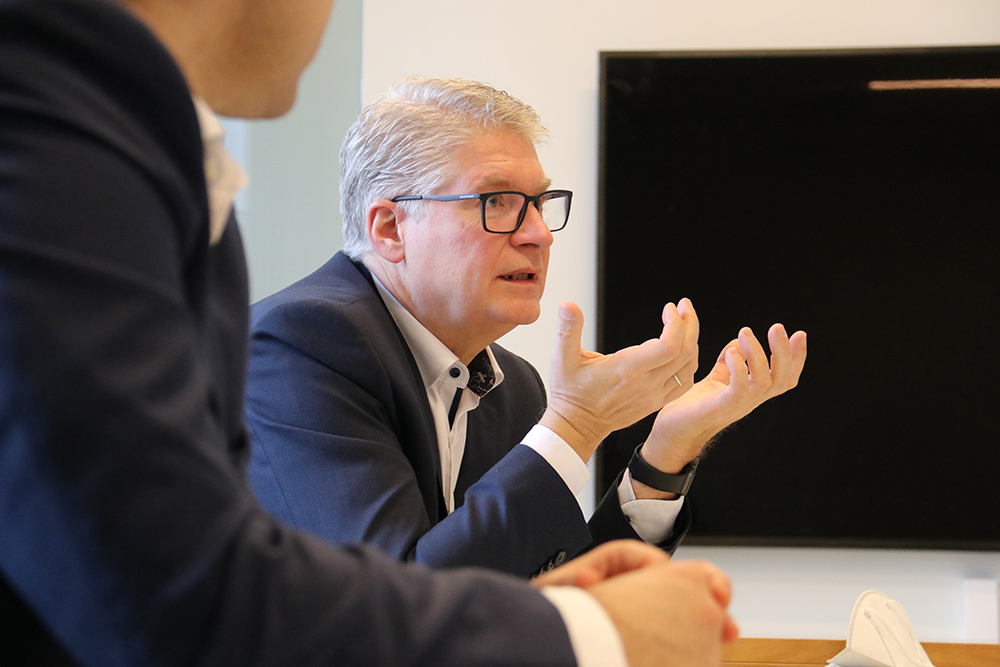
Bernhard Tillmans adds: “Of course, this was and is not without difficulty, because much of what has long been standard practice at Phoenix Contact in terms of digitization and automation is completely new to the construction industry. That’s where cultures sometimes collide. We are pleased that Unibail-Rodamco-Westfield has just as progressive and innovative a mindset as we do.”
Frederic Busse, who is part of the Phoenix Contact team of building automation specialists, adds: “We looked at many topics from the perspective of Phoenix Contact and contributed them. That was also completely new and very exciting for us. It was a great boost for all of us, i.e. the entire team of planners. And there are already topics where this new way of looking at things makes us tick differently than in conventional projects, for example in the area of energy valves or meter management.”
“So in the planning phase we are already working very closely together. That’s very positive when a manufacturer of automation solutions catches up with the planning team and comes up with new ideas and also thinks two years ahead, for example in terms of IT security. On the construction site itself,” Prior has to smile, “there’s nothing yet where intelligence has to be integrated into the building, it’s still a shell. But that’s coming in leaps and bounds now, and will continue quickly in the construction phase.”
The opening in view
Prior points to ramps emerging from the basements and explains the current status of construction activities: “The design planning has been completed, the building permits are also there, and in the TGS area we are at the end of the implementation planning. The structural work is underway. In parallel, the technical building scaffolding is now being purchased, and executing technical companies will soon start assembling. The Quarter will open in 2023. In the phase before that, building automation is a key trade.”
Bernhard Tillmans adds: “Coordination on the construction site is becoming more and more challenging as progress is made, because the trades must be closely interlocked in their activities. Building automation is, after all, a lagging trade that is directly dependent on other trades that have to provide their services in advance. Therefore, we are also the trade that can only be completed last. During the actual construction phase, this will certainly mean one or two sleepless nights, because we not only have to handle individual automation tasks, but also map the entire building and its functionality. And if one of the trades is stuck, i.e. delivers late, the schedule and/or execution will start to slip.
That’s why it’s very important for us to have the right partner companies on board. This is then not always the company with the cheapest offer, but the most competent. With M+P etwa we have been able to win a very experienced planning company as a partner in the current planning phase. M+P brings exactly this expertise and the right mindset.”
Michael Prior is visibly proud as we make our way back: “Next time we visit, this place will look completely different. And then we will already be able to demonstrate the first trades implementing automation solutions. That’s a promise!” Mr. Prior, we’ll take you at your word and stay tuned.
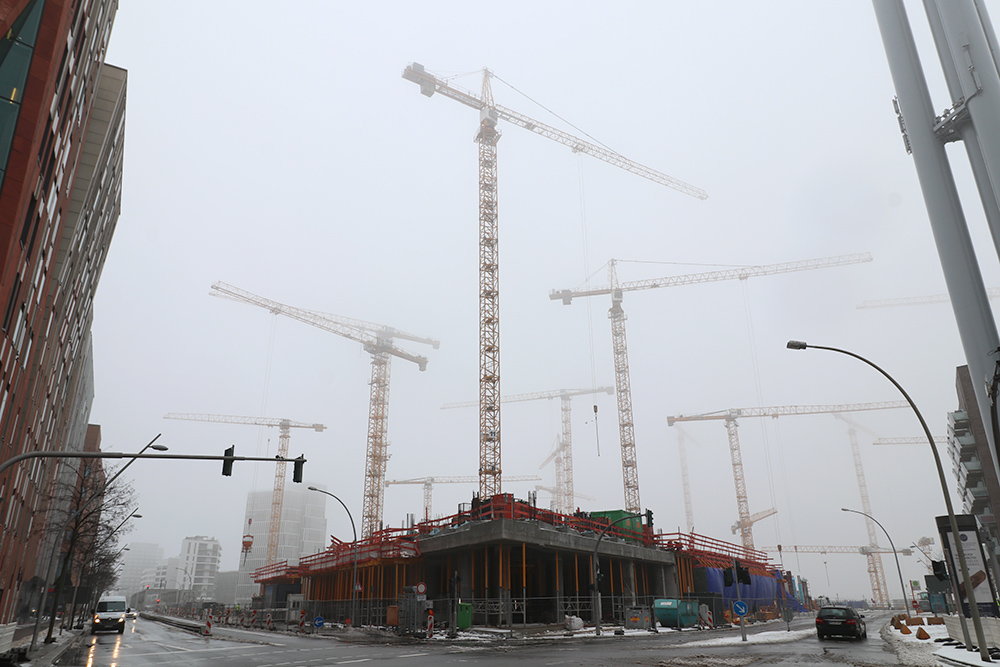
Phoenix Contact Building Automation
Westfield Hamburg – Südliches Überseequartier
Der Gebäudeflüsterer
